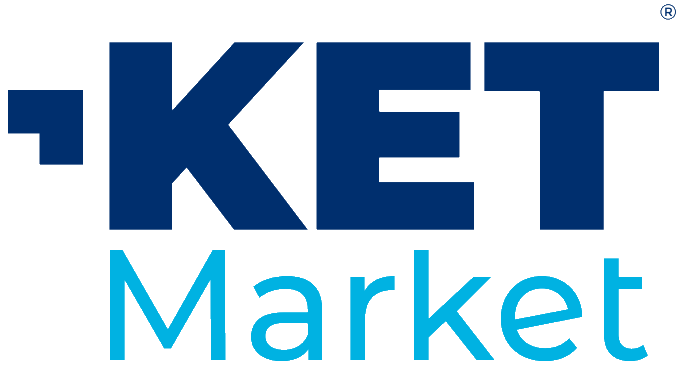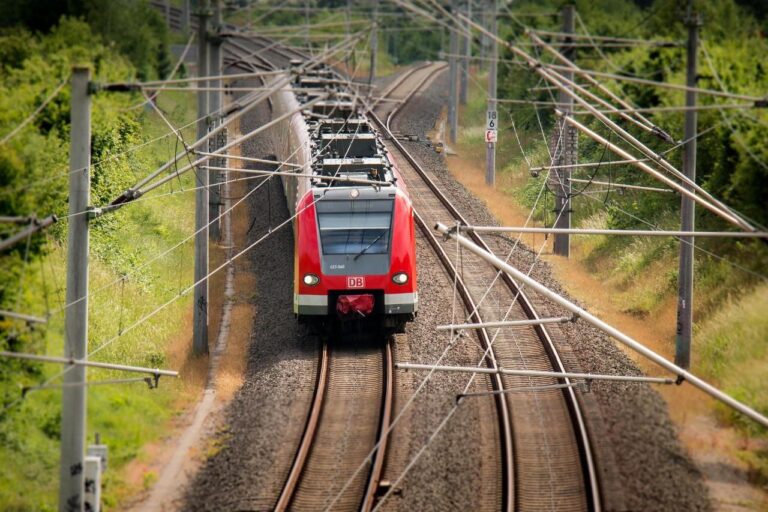The whistle coming down the tracks is the sound of Europe’s rail renaissance. Coming round the bend is increased adoption of high-speed rail transportation which promises to reduce road traffic and to curb harmful emissions. Cars are major culprits in air pollution, accounting for 14.5% of Europe’s total carbon emissions. Around half the flights in Europe are short haul journeys of less than 1 500km which generates manymore emissions than the equivalent journey by rail.The European Green Deal features plans todoublehigh-speed rail by 2030 and triple it by 2050. At the moment, 75% of freight is moved by road, so movement of goods by rail is set to double by 2050.Making trains more competitive with road and air travel means market reform and improvements to the passenger experience as well as infrastructural upgrades. Prioritising sustainable rail transport promises significant benefits, but unfortunately, it comes with unseen dangers of its own and not just for passengers.Low frequencyOne of the lesser-known hazards of rail transport is the kind of noise pollution nobody can hear. Inaudible, low frequency ground vibrations emanate from the rolling stock on the railway as it passes. As well as affecting the structural integrity of nearby infrastructure, these vibrations can have a detrimental effect on people’s health, causing headaches, fatigue and even irritability in people experiencing them.‘Right now, it is possible to reduce vibrations by putting rubber pads under the tracks,’ said Giovanni Capellari, co-founder ofPhononic Vibes. ‘That system is okay for new railways because you can put them in during construction.’ His company specialises in noise and vibration technology. For an existing railway line, rubber pads are very expensive because you have to remove the tracks to install them, according to Capellari.TheBioMetaRail projectis researching and developing special submerged barriers that can be deployed alongside the track to absorb the vibrations. The barrier walls rely on their shape for their noise reduction performance, rather than the properties of the material.“(Our design) works for very low frequencies, which is very good for railway trains.Giovanni Capellari, BioMetaRailKnown as metamaterials, the shape of the barriers, rather than the material they are made of, gives them specific resonant qualities. They interact with the low frequency sound waves of a passing train to trap and insulate against them.‘Basically, the idea is that we use shapes that have some resonant effects at frequencies that are typical for vibrations in the railway sector,’ Capellari said. In this context, the frequency of vibrations is typically between 30 and 60 Hertz. The result is a design for a two-by-three metre concrete structure that resembles a large window with square panes.This shape ‘works for very low frequencies, which is very good for railway trains.’ Additionally, the “window panes” could be divided into even smaller sizes to trap a wider range of frequencies.Distinctive designIf the panels did not have their distinctive shape and design and were simply slabs of concrete, they would not be able to halt the train’s ground-borne vibrations as effectively as BioMetaRail’s barriers. For ease of installation, there is no need to lift the railway line as these panels can be inserted into the ground alongside the track like a sunken fence, to protect clusters of homes or buildings.The research team is also investigating the ideal material, thickness, sizes and shapes of the barriers for their vibration damping effects.Capellari’s BioMetaRail project is an offshoot of theBOHEME project, which stands for Bio-Inspired Hierarchical MetaMaterials. BOHEME investigates and develops different types of mechanical metamaterials inspired by principles found in nature.The SAFETRACK project’s sensors can pick up vibrations on the railway track and identify where on the track the sound originates and what could have caused it. © NGRT SLFrom spider webs to shell whorls, BOHEME characterises natural systems and studies their possible applications. ‘The goal is to take the results from BOHEME and try to understand the best geometry (for the rail barriers) considering the market, the cost, production and installation,’ said Capellari.‘The next step is to go to market,’ he said, as well as obtain certification for the vibration-blocking intervention. ‘There’s no such kind of system in the market right now.’Ultimately, these panels will be lining the ground alongside the track in residential areas, allowing rail networks to significantly boost their train traffic without adversely affecting the people and buildings nearby.In 2021, it wasproposed to increase speed limitson Trans-European Transport Network trains to 160km/h or more by 2040. Increasing rail traffic also makes it vital that network operators are able to monitor the entire length of their railroads and infrastructure in real time. Acoustic monitoring can help achieve both these goals.“In a way, it is a very, very sophisticated microphone.Richard Aaroe, SAFETRACKRichard Aaroe’sNext Generation Rail Technologieshas developed a passive listening device that can provide railroad operators with an early warning about obstructions on the track. It can even predict what the incident and obstruction most likely is, and where it happened. TheSAFETRACK projectis working on a standalone system to ‘give accurate real-time warning of anything that happens on the infrastructure,’ Aaroe said.The system comprises sensors, which pick up vibrations on the track, and software that identifies where on the track the sound originates and what could have caused it.Sophisticated microphone‘In a way, it is a very, very sophisticated microphone,’ Aaroe explained. The acoustic vibrations on the track that are picked up by the sensors have a ‘unique fingerprint’. The sound of a tree branch falling on the track is distinct from a mudslide or broken rails, for example. Aaroe’s company has built up a ‘significant library’ of these railway acoustic fingerprints.He compares the technology to when submarines use sonar to detect surface ships by picking up its acoustic signature. ‘Today, that technology has evolved so that you can not only pick up that there is a vessel passing, but you can pick up the type of engine, the class of the vessel itself, the speed, direction, and so on,’ Aaroe said.The same principles apply with rail acoustics. ‘Every incident has a uniqueness and we have identified that and then we can report this to either the train controller, operator or even the driver themselves.’The sensors are relatively small, about the size of a smartphone. An installation includes four sensors, one on each rail of the track and then another two 10 metres further along the track. Because sound travels through solid rails much better than through air, one sensor package can detect acoustic vibrations five kilometres in each direction.The technology is currently being trialled by national rail networks in the UK, Germany and Spain, and it will soon be deployed in another three countries, according to Aaroe.The European Union is committed to growing its rail transportation as part ofthe European Green Dealwhich aims to make Europe the first carbon-neutral continent by 2050. As more people opt for rail over cars, technology that makes trains safer and quieter will increasingly be important.The research in this article was funded by the EU. If you liked this article, please consider sharing it on social media.
This article was originally published in Horizon, the EU Research and Innovation magazine.
Add to favorites:
Favorite
Share:
On track for reduced noise pollution and railway safety amplifiers
Listing Description
Documents
No documents available.
Ask KETMarket to make a contact
Connect with the Listing Owner!

Video
Related Funding and Finance Opportunities
Unlock Exclusive Funding Opportunities!

Upgrade to Premium now and never miss an important opportunity again! Already a premium member? Log in here to explore your matches.
Related Innovation Offers
Discover Tailored Innovation Offers!
 Gain access to technology solutions that match your specific needs and interests—carefully selected to support your innovation goals. These offers are exclusive to our premium members, helping you identify relevant technologies faster and start the right conversations with potential partners.
Upgrade to Premium and explore your personalized technology matches today!
Already a premium member? Log in here to view your tailored offers.
Gain access to technology solutions that match your specific needs and interests—carefully selected to support your innovation goals. These offers are exclusive to our premium members, helping you identify relevant technologies faster and start the right conversations with potential partners.
Upgrade to Premium and explore your personalized technology matches today!
Already a premium member? Log in here to view your tailored offers.
 Gain access to technology solutions that match your specific needs and interests—carefully selected to support your innovation goals. These offers are exclusive to our premium members, helping you identify relevant technologies faster and start the right conversations with potential partners.
Upgrade to Premium and explore your personalized technology matches today!
Already a premium member? Log in here to view your tailored offers.
Gain access to technology solutions that match your specific needs and interests—carefully selected to support your innovation goals. These offers are exclusive to our premium members, helping you identify relevant technologies faster and start the right conversations with potential partners.
Upgrade to Premium and explore your personalized technology matches today!
Already a premium member? Log in here to view your tailored offers.
Discover Tailored Innovation Offers!
 Gain access to technology solutions that match your specific needs and interests—carefully selected to support your innovation goals. These offers are exclusively available to our premium members, helping you identify relevant technologies faster and start the right conversations with potential partners.
Gain access to technology solutions that match your specific needs and interests—carefully selected to support your innovation goals. These offers are exclusively available to our premium members, helping you identify relevant technologies faster and start the right conversations with potential partners.
Upgrade to Premium now and explore your personalized technology matches today! Already a premium member? Log in here to view your tailored offers.
 Gain access to technology solutions that match your specific needs and interests—carefully selected to support your innovation goals. These offers are exclusively available to our premium members, helping you identify relevant technologies faster and start the right conversations with potential partners.
Gain access to technology solutions that match your specific needs and interests—carefully selected to support your innovation goals. These offers are exclusively available to our premium members, helping you identify relevant technologies faster and start the right conversations with potential partners.
Upgrade to Premium now and explore your personalized technology matches today! Already a premium member? Log in here to view your tailored offers.

